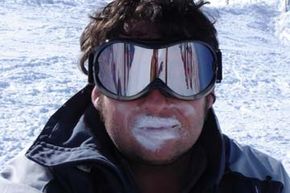You may think that your skin is safe from the elements once swimsuit season ends and the air gets cold. Unfortunately, that's not the case. Most people know that the sun can still harm your skin in the winter, but there's another environmental factor to watch out for -- the wind.
Your skin has an outer layer made of molecules called lipids; they keep your skin moisturized and protect it from the sun and wind. When the air is cold, however, your skin contains less moisture. As a result, the elements can break down these lipids and harm your skin more easily. The combination of wind friction on exposed areas of the skin and ultraviolet (UV) ray exposure -- which can occur even on cloudy days -- can cause the redness and skin irritation commonly known as windburn [source: Baumann].
Advertisement
Although windburn most frequently targets the face, it can affect any exposed area of skin. The stronger and colder the winds, the more susceptible skin becomes to windburn. Windburn is especially common among people involved in winter sports like skiing and skating. The increased movement and possible glare from the sun causes more wind friction and sun exposure, which can lead to uncomfortable chafing. You're especially likely to get windburn if you get off a plane and head out into the cold [source: Baumann]. People in warm climates don't often get windburn because they aren't usually exposed to the cold, dry air that causes it.
A windburn may feel like sunburn, and because sunburns are still possible in the winter (especially for those who play outdoor winter sports), the two irritations may coincide. Luckily, the long-term effects of windburn are much less severe than those of sunburn. If you want to find out how to prevent and treat windburn, head to the next page.
Advertisement

